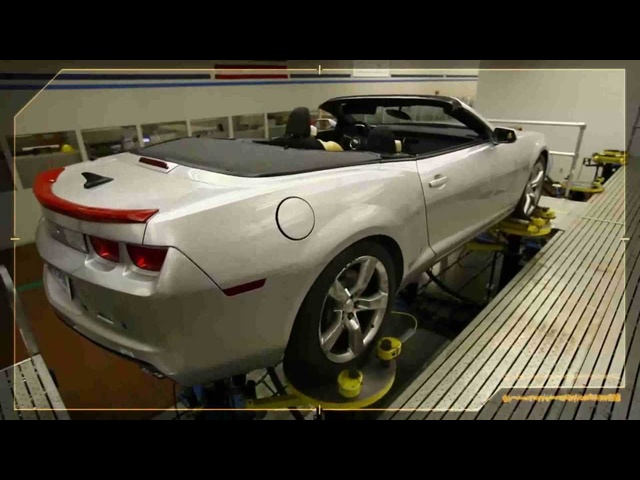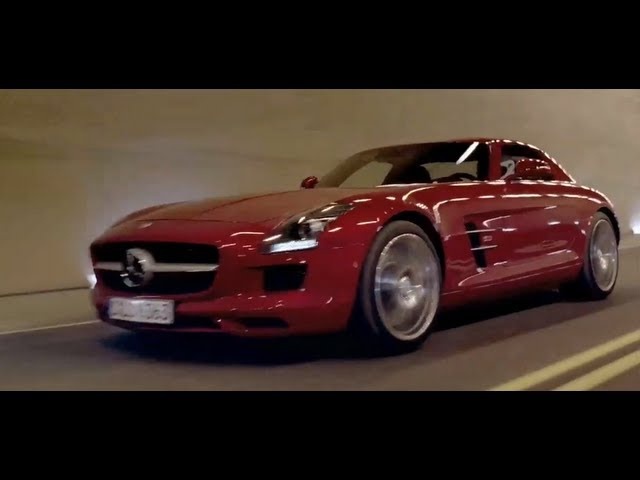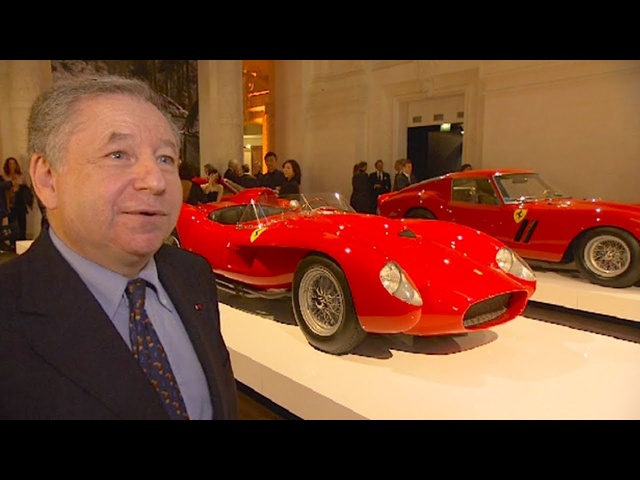Views: 19820
BMW E9 3.0 CSI Review Includes BMW Official Factory Footage BMW 3.0 CSi Commercial
Great BMW E9 3.0 CSI Review / Driving / Interior / Includes BMW Official Factory Footage + BMW 3.0 CSl Commercial Watch + SUBSCRIBE #CARJAMTV #BMWE9 #BMW30CSi #BMWMSport
CARJAM TV - Subscribe Here Now https://www.youtube.com/user/CarjamRadio/videos
For The World's Best Car Videos
Website: http://www.carjamtv.com
CARJAM TV: WORLD’S BEST CAR VIDEOS
The BMW New Six CS (internal name BMW E9) is a two-door coupé built for BMW by Karmann from 1968 to 1975. It was developed from the New Class-based BMW 2000 CS coupé, which was enlarged to hold the BMW M30 straight-6 engine used in the E3 sedan.
The E9 platform, especially the 3.0 CSL homologation special, was very successful in racing, especially in European Touring Car Championship and the Deutsche Rennsport Meisterschaft. This helped to establish BMW's status as a sporty driver's car.
The 2800CS was replaced by the 3.0 CS and 3.0 CSi in 1971. The engine had been bored out to give a displacement of 2,986 cc (182.2 cu in), and was offered with a 9.0:1 compression ratio, twin carburettors, and 180 horsepower (130 kW) at 6000 RPM in the 3.0 CS or a 9.5:1 compression ratio, Bosch D-Jetronic fuel injection, and 200 horsepower (150 kW) at 5500 RPM in the 3.0 CSi.[3] There was a 4 speed manual and an automatic transmission variant.
They were sold in the United States from 1970 to 1974, by Max Hoffman. He was the importer and sole distributor for BMW from the mid-sixties until selling his business to BMW of North America in 1975. [8] 1974 model cars had protruding 5 mile per hour bumpers.
Introduced in May 1972,[9] the 3.0 CSL was a homologation special built to make the car eligible for racing in the European Touring Car Championship. 1,265 were built.
The "L" in the designation meant leicht (light), unlike in other BMW designations, where it meant lang (long). The lightness was achieved by using thinner steel to build the unit body, deleting the trim and soundproofing,[10] using aluminium alloy doors, bonnet, and boot lid, and using Perspex side windows.[9] The five hundred 3.0 CSLs exported to the United Kingdom were not quite as light as the others, as the importer had insisted on retaining the soundproofing, electric windows, and stock E9 bumpers on these cars.[9][11] The CSL was never sold in the United States.
Initially using the same engine as the 3.0 CS,[12] the 3.0 CSL was given a very small increase in displacement to 3,003 cc (183.3 cu in) by increasing the engine bore by one quarter of a millimetre.[9][12] This was done in August 1972 to allow the CSL to be raced in the "over three litre" racing category, allowing for some increase in displacement in the racing cars.[9] In 1973,[10][13] the engine in the 3.0 CSL was given another, more substantial increase in displacement to 3,153 cc (192.4 cu in) by increasing the stroke to 84 mm (3.3 in).[12][13] This final version of the 3.0 CSL was homologated in July 1973 along with an aerodynamic package including a large air dam, short fins running along the front fenders, a spoiler above and behind the trailing edge of the roof, and a tall rear wing.[14] The rear wings were not installed at the factory, but were left in the boot for installation after purchase. This was done because the wings were illegal for use on German roads. The full aero package earned the racing CSLs the nickname "BMW Batmobile".
In 2015 BMW introduced the 3.0 CSL Hommage concept car at Concorso d'Eleganza Villa d'Este. The car is a tribute to the 3.0 CSL. It has an inline-six engine with an eBoost hybrid system in the rear of the car. As a homage to the original, the 3.0 CSL Hommage has a minimal interior to keep the weight as low as possible; carbon fiber and aluminium are used in the cockpit for the same reason. The Hommage has Laser-LED lights similar to those in the i8.
https://en.wikipedia.org/wiki/BMW_E9
CARJAM TV - Subscribe Here Now https://www.youtube.com/user/CarjamRadio/videos
For The World's Best Car Videos
Website: http://www.carjamtv.com
CARJAM TV: WORLD’S BEST CAR VIDEOS
The BMW New Six CS (internal name BMW E9) is a two-door coupé built for BMW by Karmann from 1968 to 1975. It was developed from the New Class-based BMW 2000 CS coupé, which was enlarged to hold the BMW M30 straight-6 engine used in the E3 sedan.
The E9 platform, especially the 3.0 CSL homologation special, was very successful in racing, especially in European Touring Car Championship and the Deutsche Rennsport Meisterschaft. This helped to establish BMW's status as a sporty driver's car.
The 2800CS was replaced by the 3.0 CS and 3.0 CSi in 1971. The engine had been bored out to give a displacement of 2,986 cc (182.2 cu in), and was offered with a 9.0:1 compression ratio, twin carburettors, and 180 horsepower (130 kW) at 6000 RPM in the 3.0 CS or a 9.5:1 compression ratio, Bosch D-Jetronic fuel injection, and 200 horsepower (150 kW) at 5500 RPM in the 3.0 CSi.[3] There was a 4 speed manual and an automatic transmission variant.
They were sold in the United States from 1970 to 1974, by Max Hoffman. He was the importer and sole distributor for BMW from the mid-sixties until selling his business to BMW of North America in 1975. [8] 1974 model cars had protruding 5 mile per hour bumpers.
Introduced in May 1972,[9] the 3.0 CSL was a homologation special built to make the car eligible for racing in the European Touring Car Championship. 1,265 were built.
The "L" in the designation meant leicht (light), unlike in other BMW designations, where it meant lang (long). The lightness was achieved by using thinner steel to build the unit body, deleting the trim and soundproofing,[10] using aluminium alloy doors, bonnet, and boot lid, and using Perspex side windows.[9] The five hundred 3.0 CSLs exported to the United Kingdom were not quite as light as the others, as the importer had insisted on retaining the soundproofing, electric windows, and stock E9 bumpers on these cars.[9][11] The CSL was never sold in the United States.
Initially using the same engine as the 3.0 CS,[12] the 3.0 CSL was given a very small increase in displacement to 3,003 cc (183.3 cu in) by increasing the engine bore by one quarter of a millimetre.[9][12] This was done in August 1972 to allow the CSL to be raced in the "over three litre" racing category, allowing for some increase in displacement in the racing cars.[9] In 1973,[10][13] the engine in the 3.0 CSL was given another, more substantial increase in displacement to 3,153 cc (192.4 cu in) by increasing the stroke to 84 mm (3.3 in).[12][13] This final version of the 3.0 CSL was homologated in July 1973 along with an aerodynamic package including a large air dam, short fins running along the front fenders, a spoiler above and behind the trailing edge of the roof, and a tall rear wing.[14] The rear wings were not installed at the factory, but were left in the boot for installation after purchase. This was done because the wings were illegal for use on German roads. The full aero package earned the racing CSLs the nickname "BMW Batmobile".
In 2015 BMW introduced the 3.0 CSL Hommage concept car at Concorso d'Eleganza Villa d'Este. The car is a tribute to the 3.0 CSL. It has an inline-six engine with an eBoost hybrid system in the rear of the car. As a homage to the original, the 3.0 CSL Hommage has a minimal interior to keep the weight as low as possible; carbon fiber and aluminium are used in the cockpit for the same reason. The Hommage has Laser-LED lights similar to those in the i8.
https://en.wikipedia.org/wiki/BMW_E9
Make: BMW
More by CARJAM TV
-
 New Camaro Convertible TV Ad Funny Chevy Car ...
New Camaro Convertible TV Ad Funny Chevy Car ...
 Views: 6646
Views: 6646 -
 New Mercedes Self Driving Car Seats 12 Can Turn ...
New Mercedes Self Driving Car Seats 12 Can Turn ...
 Mercedes
Views: 7834
Mercedes
Views: 7834 -
 Mercedes SLS AMG 2013 Classic TV Commercial ...
Mercedes SLS AMG 2013 Classic TV Commercial ...
 Mercedes
Views: 2861773
Mercedes
Views: 2861773 -
 Jean Todt Owns A Ferrari 250 SWB Covets ...
Jean Todt Owns A Ferrari 250 SWB Covets ...
 Ferrari
Views: 7478
Ferrari
Views: 7478





